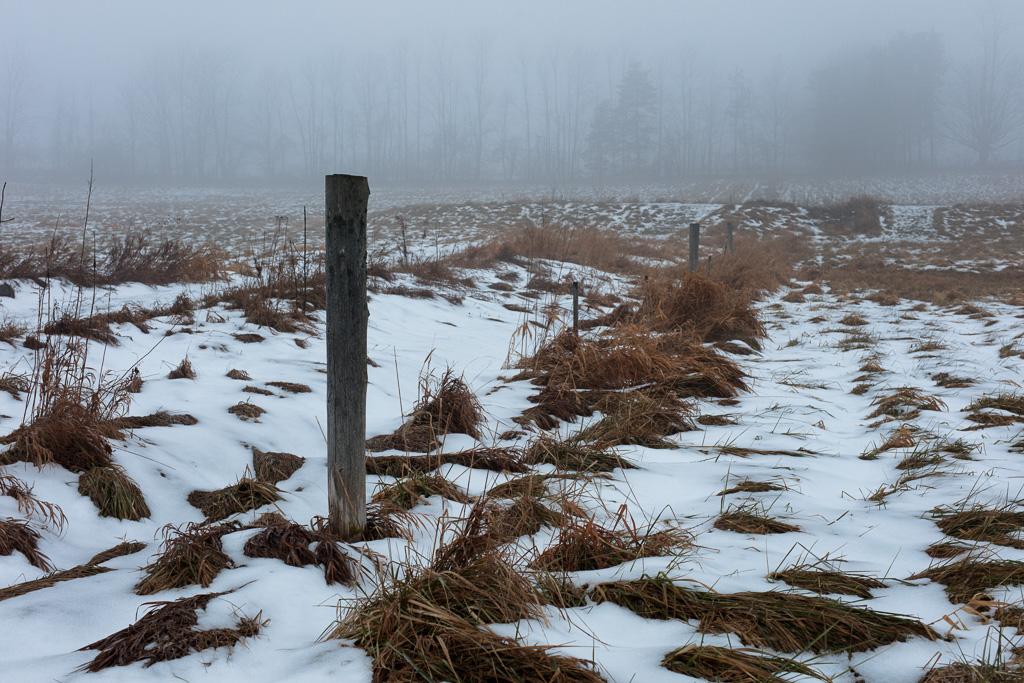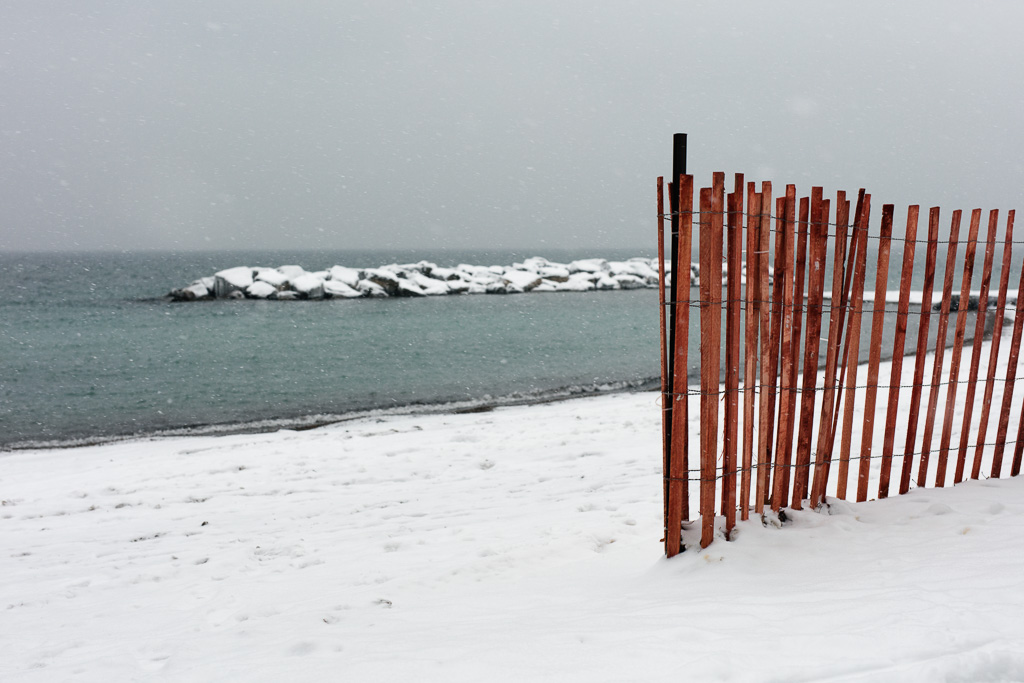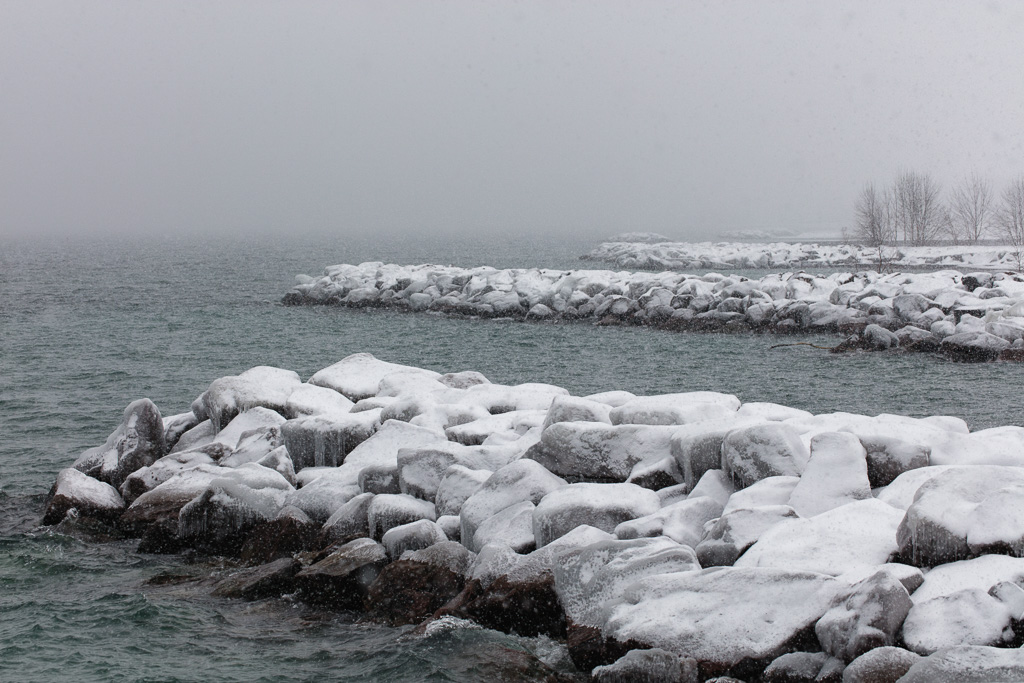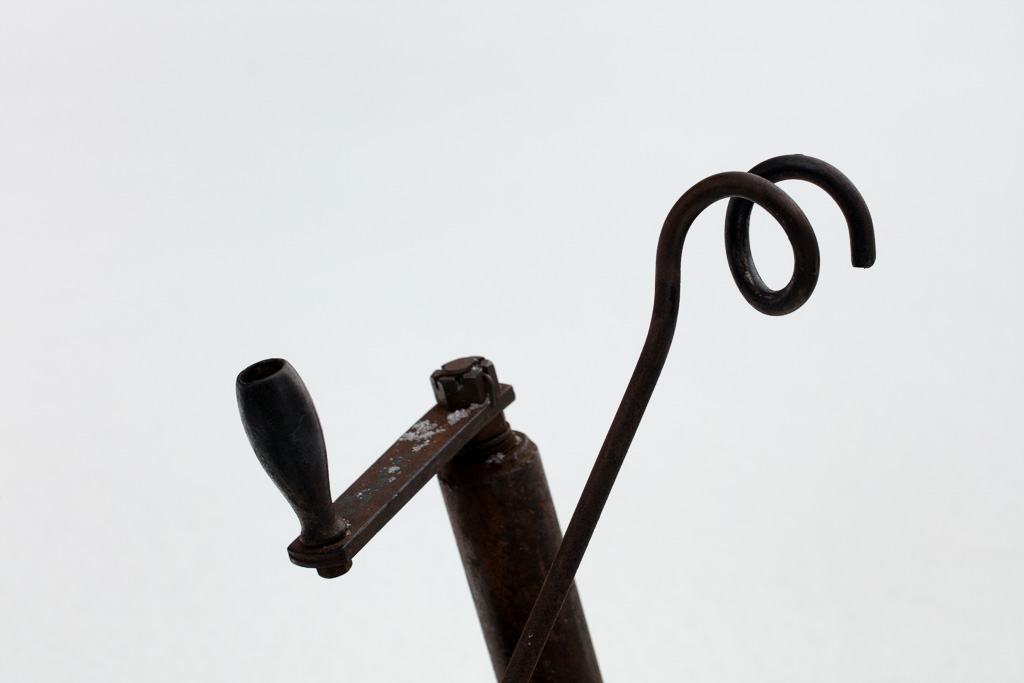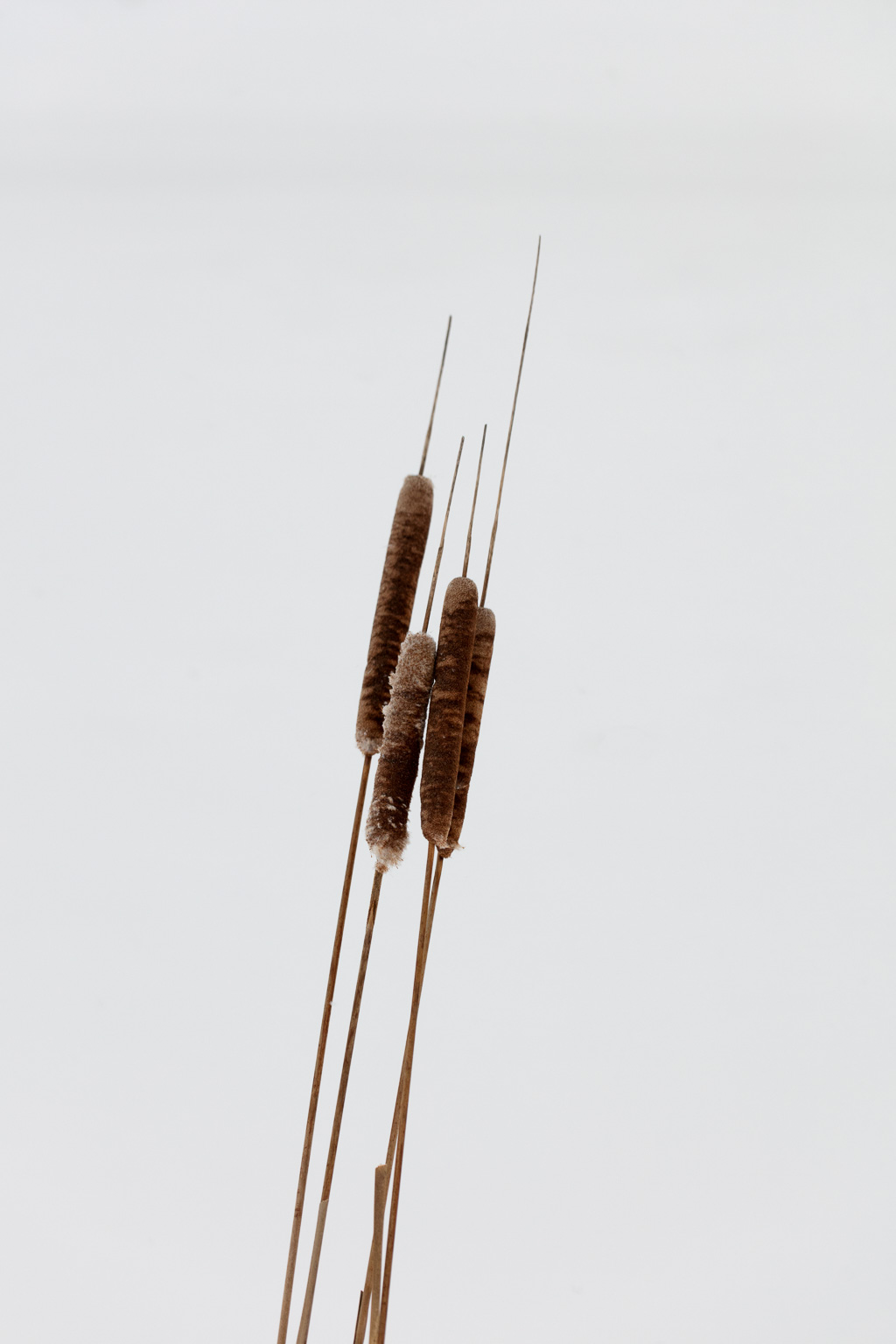The chief merit of this post is the alliteration in the title: three “F” words in a row is irresistible. I could have added a fourth, but then I’d be giving up my family friendly rating. But enough about rhetoric.
This is a variation on the theme of Kanso, which I’ve previously mentioned here and here, creating a scene of calming simplicity by removing elements from the image one by one until only the essential remains. Although photography in the real world often makes it impossible to remove elements from a scene (Photoshop notwithstanding), nature itself sometimes steps in and lends a hand.
In previous posts, I’ve shown how a backdrop of pure snow can render an utterly simple photo. In this instance, I turn to fog as my natural assistant. It isn’t perfect, but it helps. The fog softens the background just enough that it doesn’t distract us from the foreground, a single fence post. We can trace the line of fence posts that recedes across the field and disappears into the foggy distance.
I shot this on New Year’s Day, 2022 at Williams Farm in Wyebridge, Ontario. The scene arrived like a gift and, although I wouldn’t call myself a superstitious person, I took it as a portent of the year to come. At least as far as photographs go, I expect 2022 will be an excellent year.
